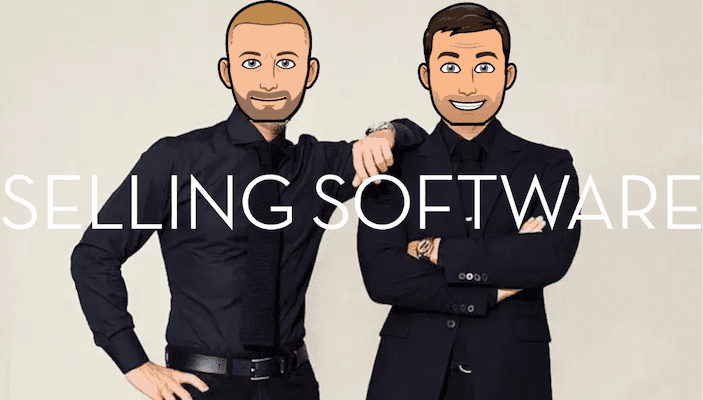Selling Software: Introduction
We're introducing a new blog series called "Selling Software", named after the Netflix smash hit, Selling Sunset. DoltHub happens to be based in LA, not too far from Sunset. Brian, DoltHub's Head of Sales, and I handle most of the selling here at DoltHub. These are our Bitmojis on the Oppenheim twins' bodies. With a logo like this, how could I not write a series?
We're Selling Software!
What is Selling Software About?
If you're new to DoltHub, let's set the table a bit about what we do and what we sell.
Our primary product is Dolt, the world's first and only version controlled SQL database, which is proudly free and open source. Our product competes with other open source online transaction processing (OLTP) databases, MySQL and Postgres. Dolt has version control features other databases do not have. Open source databases generally monetize via support, hosting, or enterprise editions though the company or foundation building the database is not always the best at monetizing it.
Dolt supports Git-like version control of databases. Git is monetized by remote hosting and collaboration platforms like GitHub and GitLab. Dolt has similar products called DoltHub and DoltLab respectively.
So, following those sales strategies from our two technological influences, at DoltHub we sell:
Most of our revenue is split evenly between support, Hosted Dolt, and DoltLab Enterprise. DoltHub Pro is not a big money maker for us yet.
Our primary marketing is done through our blog which you are reading right now. We publish five articles per week. We notify potential readers of new articles on LinkedIn, X, and Reddit. Some of our blog content is catered towards search which tends to be the best channel for generating new interest. Additionally, we do a booth at a trade show about once per quarter.
We do customer engagement through our Discord, email, and GitHub Issues. I send a weekly update email to everyone who has signed up for DoltHub.
Once we identify a potential customer as a lead, Brian takes over and works the lead until it's closed, positively or negatively.
This is a pretty simple sales motion but it took a while to land here. This blog series will explain how we got here.
Why Publish a Blog Series?
I debated for a long time whether to write about our sales process. I'm an engineer, not a salesman. I wasn't sure if anyone would care about my thoughts on sales. As we get deeper into selling successfully, I think sharing some of the ups and downs on how we got here will be useful to others, especially other technical founders trying to sell open source software. We're committed to open source and anything we can do to help the open source community is good.
Additionally, as many of you know, we publish five blogs per week. So, we always need more content. Why not sales content? Maybe I can even get an article or two out of Brian for all that commission he gets. I'm only sort of joking here.
Seriously though, one of the reasons we write so many articles is writing helps clarify and crystalize our ideas into something more, either a lasting piece of content, a new strategy, or even a product improvement. I think writing about our sales process and sharing it could make us better at selling.
Topic Ideas
I have some initial topic ideas but if you have one, feel free to Send me your ideas. Also, feel free to email me to upvote a topic you are especially interested in or really for any reason. Here's my initial list.
- Your First $1 of Revenue
- Top of Funnel Marketing
- Open or Closed Source?
- What do I Sell?
- How do I Price?
- So many Sales Vendors...
- You are Not SaaS
- Selling to Engineers
Brian and I will probably tackle a topic every couple weeks or so.
Conclusion
Here at DoltHub, we're selling software. Want to buy some Dolt? Come by our Discord and ask for Brian.

